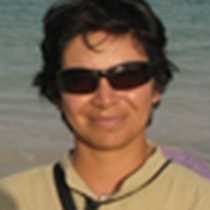Santa Cruz Island
Our day began visiting the moist highlands of Santa Cruz Island, the second largest one in Galápagos and the one that has the largest human population in the archipelago.
Today we had the best day to observe the Galápagos giant tortoise in its natural habitat, where the vegetation is so abundant that walking through it could only be compared to walk though the rain forest.
This morning we encountered several giant tortoises feeding on grass and some were taking a “volcanic mud treatment” to remove ticks from their skin, a few more were sleeping in the middle of the trail while some finches tried to clean their carapaces.
After exploring the tortoise reserve we walked into a very impressive lava tunnel formed during the time this island was an active volcano, several thousands of years ago. All of this intense volcanic activity could have pushed several species to the brink of extinction, while others survived by luck. We were amazed by how the island looked on the surface and now we could appreciate the under-layers.
We visited the Charles Darwin Research Center and learned that juvenile land tortoises a little older than one year were getting ready to be measured by the scientists that look so carefully after them. This ensures that tortoises in the center will be released in the same islands that their parents had come from. The main reason behind this program is due to a history of overexploitation of giant tortoises for their meat and oil. Their numbers diminished so much that at the end of the fifties only a small fraction of the original population could be found on some islands. The quick understanding of the importance of these emblematic animals drove to the establishment of a program to restore tortoises' populations to repair the damage done in the last century. Seeing that the restoration program is succeeding gives us hope for the future generations to see what we see, and appreciate what we are able to appreciate today.
Our day began visiting the moist highlands of Santa Cruz Island, the second largest one in Galápagos and the one that has the largest human population in the archipelago.
Today we had the best day to observe the Galápagos giant tortoise in its natural habitat, where the vegetation is so abundant that walking through it could only be compared to walk though the rain forest.
This morning we encountered several giant tortoises feeding on grass and some were taking a “volcanic mud treatment” to remove ticks from their skin, a few more were sleeping in the middle of the trail while some finches tried to clean their carapaces.
After exploring the tortoise reserve we walked into a very impressive lava tunnel formed during the time this island was an active volcano, several thousands of years ago. All of this intense volcanic activity could have pushed several species to the brink of extinction, while others survived by luck. We were amazed by how the island looked on the surface and now we could appreciate the under-layers.
We visited the Charles Darwin Research Center and learned that juvenile land tortoises a little older than one year were getting ready to be measured by the scientists that look so carefully after them. This ensures that tortoises in the center will be released in the same islands that their parents had come from. The main reason behind this program is due to a history of overexploitation of giant tortoises for their meat and oil. Their numbers diminished so much that at the end of the fifties only a small fraction of the original population could be found on some islands. The quick understanding of the importance of these emblematic animals drove to the establishment of a program to restore tortoises' populations to repair the damage done in the last century. Seeing that the restoration program is succeeding gives us hope for the future generations to see what we see, and appreciate what we are able to appreciate today.



